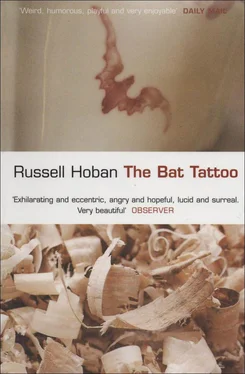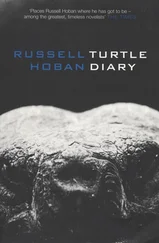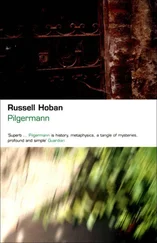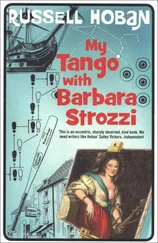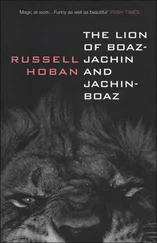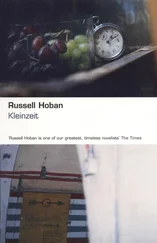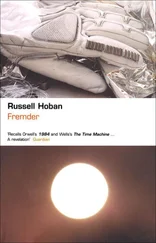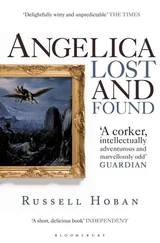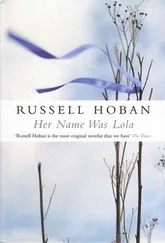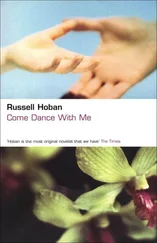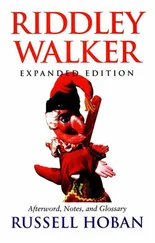Russell Hoban - The Bat Tattoo
Здесь есть возможность читать онлайн «Russell Hoban - The Bat Tattoo» весь текст электронной книги совершенно бесплатно (целиком полную версию без сокращений). В некоторых случаях можно слушать аудио, скачать через торрент в формате fb2 и присутствует краткое содержание. Год выпуска: 2004, Издательство: Bloomsbury Publishing PLC, Жанр: Современная проза, на английском языке. Описание произведения, (предисловие) а так же отзывы посетителей доступны на портале библиотеки ЛибКат.
- Название:The Bat Tattoo
- Автор:
- Издательство:Bloomsbury Publishing PLC
- Жанр:
- Год:2004
- ISBN:нет данных
- Рейтинг книги:4 / 5. Голосов: 1
-
Избранное:Добавить в избранное
- Отзывы:
-
Ваша оценка:
- 80
- 1
- 2
- 3
- 4
- 5
The Bat Tattoo: краткое содержание, описание и аннотация
Предлагаем к чтению аннотацию, описание, краткое содержание или предисловие (зависит от того, что написал сам автор книги «The Bat Tattoo»). Если вы не нашли необходимую информацию о книге — напишите в комментариях, мы постараемся отыскать её.
The Bat Tattoo — читать онлайн бесплатно полную книгу (весь текст) целиком
Ниже представлен текст книги, разбитый по страницам. Система сохранения места последней прочитанной страницы, позволяет с удобством читать онлайн бесплатно книгу «The Bat Tattoo», без необходимости каждый раз заново искать на чём Вы остановились. Поставьте закладку, и сможете в любой момент перейти на страницу, на которой закончили чтение.
Интервал:
Закладка:
We went back down the rue des Bancs to Le Relais des Hautes Quartiers. There we drank Pinot Noir with our boeuf bourgignon and felt well pleased with the world. The quiet voices of the other diners and the clink of cutlery made a soothing background; the music was old standards, not too loud. By the light of the candle on our table we held with our eyes each other’s faces. Then we walked slowly down to the hotel, went to our room and made love. As we lay in each other’s arms afterwards Solange said, ‘God is an idea I can understand but the Jesus thing baffles me.’
‘How is that?’
‘He is the redeemer, yes?’
‘Yes.’
‘He died for our sins?’
‘Yes.’
‘So now we sinners have a clean slate and we don’t need a Last Judgement, do we?’
‘That isn’t how it works, Solange. Christ was the ransom for the many but one still needs to claim the benefit of what he did. If you believe that kind of thing, that is.’
‘What is that benefit?’
‘The restoration of your relationship with God.’
‘Why does it need to be restored?’
‘Because of the Fall, because of the Original Sin.’
‘That’s going back a long way!’
‘That’s why it’s called the Original.’
‘How does one claim that benefit, how does one get restored?’
‘By having faith in Christ.’
‘And that puts you right with God?’
‘If you seek his forgiveness.’
‘OK, so you have faith in Christ and you ask forgiveness from God, then you die. Then do you still have to go through the Last Judgement?’
‘Yes.’
‘What then, you get preferential treatment because you had faith in Christ and forgiveness from God?’
‘It isn’t that kind of thing. I was taught that if you have faith in Christ then he takes on himself the burden of your sins and enables you to restore your relationship with God. He does this out of love. “For now we see through a glass darkly; but then face to face: now I know in part; but then shall I know even as also I am known. And now abideth faith, hope, charity, these three; but the greatest of these is charity.’” As I said those words I believed that it was possible to know and be known fully. I drew Solange closer to me, her long warm body. She was snoring gently. Charity is caritas in Latin, which expresses better what I felt for Solange.
The next day was Sunday. After a late breakfast at the hotel we checked out and walked around the town. In the Champ de Mars when it was time for lunch we had omelettes and a bottle of Pinot Noir at a bistro patronised by young locals with children and elderly ones with small dogs.
From there we once more ascended the hill to the rue des Bancs and the Musée Rolin where Gislebertus’s Eve was to be seen. We paid at the reception desk and were directed to the room where Eve resided. A Japanese woman sat on a bench viewing her. By the door a man who looked like someone’s nephew kept an eye on us. Eve and her bit of stone garden were in two pieces carefully fitted together. She was fixed to the wall against a background of black cloth. She would have looked quite different as part of the cathedral; here her isolation and the lighting put her as it were on centre stage.
‘Well,’ said Solange, ‘here she is: the Original Sinner who gave Adam the fruit of the Tree of Knowledge.’
‘Somebody had to get the ball rolling.’
‘This is the first medieval nude. She used to be on the lintel over the north door of the cathedral but she was taken down and used as a building block in a private house when they mortared over the tympanum.’
‘Who and why?’
‘The cathedral chapter. In the eighteenth century the canons found Gislebertus not to their taste, so they covered up the tympanum and removed some of the other carvings. How do you like Eve?’
Eve was designed for a lintel and so is a horizontal composition. Her nudity is sinuous as she glides serpent-like through the foliage and grasses of the garden. Her face is contemplative; almost her mind might be on other things, possibly she hums a little tune as she reaches behind her for the stone fruit of the Tree of Knowledge. Does she think of what will follow from the eating of that apple? ‘She is what she is,’ I said. ‘She is the mother of us all, a mystery.’
‘I want pictures of her,’ said Solange. ‘This is a woman thing.’
As she brought her camera up to her eye the man seated near the door explained, with an apologetic expression, that there was an eight-franc charge for photography. I paid him and Solange photographed Eve from several angles, including a close-up of her bottom seen from the rear. ‘She’s only a relief really,’ she said. ‘I’d like to see what he’d have done with her in the round.’
While I pondered the Original Sin and later ones we went again to the cathedral where we looked at the tympanum in the daylight. The stone was grey, weathered and pitted; to my eyes it showed itself doubly: then and now, with Christ as always offering himself. The tympanum in my eyes went from something to nothing and back again; my mind could not contain it as one or the other.
We went into the cathedral and tilted our heads back to view the many Gislebertus capitals which had been spared by the canons. These were Bible stories in stone, from Noah’s Ark to the fall of Simon Magus; also lesser-known scenes with grimacing devils and various fanciful creatures. I had little response left for these — my mind was filled with the Christ of the tympanum and the mystery of Eve.
We left the cathedral a few minutes before Sunday services began. The sky was clear, the sun was bright, and as we started back down the hill the bells of St Lazare suddenly pealed. ‘There is a God!’ they shouted with their great metal throats. ‘Believe us!’
I turned back towards the cathedral as if pulled by a chain. ‘They get paid to say that,’ said Solange. ‘It’s their job.’
We had only our rucksacks with us so there was no need to go back to the hotel. We walked to the train station from where the bus for Le Creusot would depart. At the Hotel de France bar opposite we had coffee and Poire William, then I wanted to take a picture of Solange. ‘Better not,’ she said, ‘it’s bad luck.’
‘How is it bad luck?’
‘Years from now the photograph will be with you but maybe I won’t.’
‘Where will you be, Solange?’
‘I don’t know. Gone, maybe.’
I took the photograph. I have it still but Solange is not with me. We loved each other; I thought we would be together always. On our return to Paris I departed for Dortmund for my annual visit to my uncle Dietrich von Peng, the executor of the estate. Solange also was leaving Paris for a two-week holiday in New York. She met a painter there and married him and now she lives in America. I had a letter from her: ‘Dear Adelbert,’ she wrote:
What if you had not taken that photo? Remember the two great hands that grab the poor sinner by the head? Goneness is like that, always waiting to grab someone. Maybe the one being grabbed is not even a sinner; maybe Goneness reaches blindly for anyone, good or bad.
I remember all there was.
Solange
Nineteen Octobers passed, and in the twentieth I wished to see the Christ of Saint Lazare again. I desired also to hear the bells. I went without Victoria, without Jean-Louis and the Rolls-Royce. I went alone as a pilgrim. Taking only a rucksack, I walked from my house in the Avenue Montaigne to Franklin D. Roosevelt, where I took the RER to the Gare de Lyon.
There in the daytime it was like a labyrinth of the night. There were many large young people with backpacks as big as steamer trunks and many old people with trolley bags. I already had my ticket and seat reservation, so I went to Platform 13 where I found the 12.34 to Marseille and Saint-Charles. This train would stop at Chagny, from where a bus would take me to Autun just as it had taken the two of us long ago.
Читать дальшеИнтервал:
Закладка:
Похожие книги на «The Bat Tattoo»
Представляем Вашему вниманию похожие книги на «The Bat Tattoo» списком для выбора. Мы отобрали схожую по названию и смыслу литературу в надежде предоставить читателям больше вариантов отыскать новые, интересные, ещё непрочитанные произведения.
Обсуждение, отзывы о книге «The Bat Tattoo» и просто собственные мнения читателей. Оставьте ваши комментарии, напишите, что Вы думаете о произведении, его смысле или главных героях. Укажите что конкретно понравилось, а что нет, и почему Вы так считаете.
